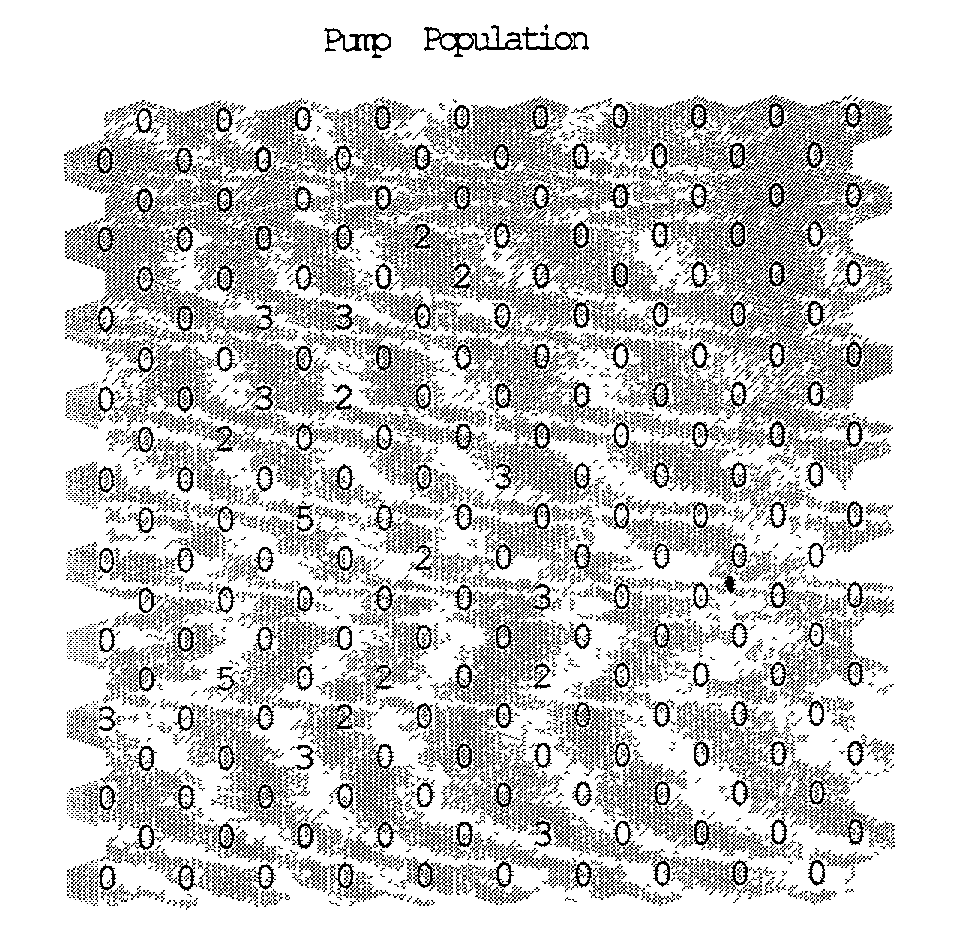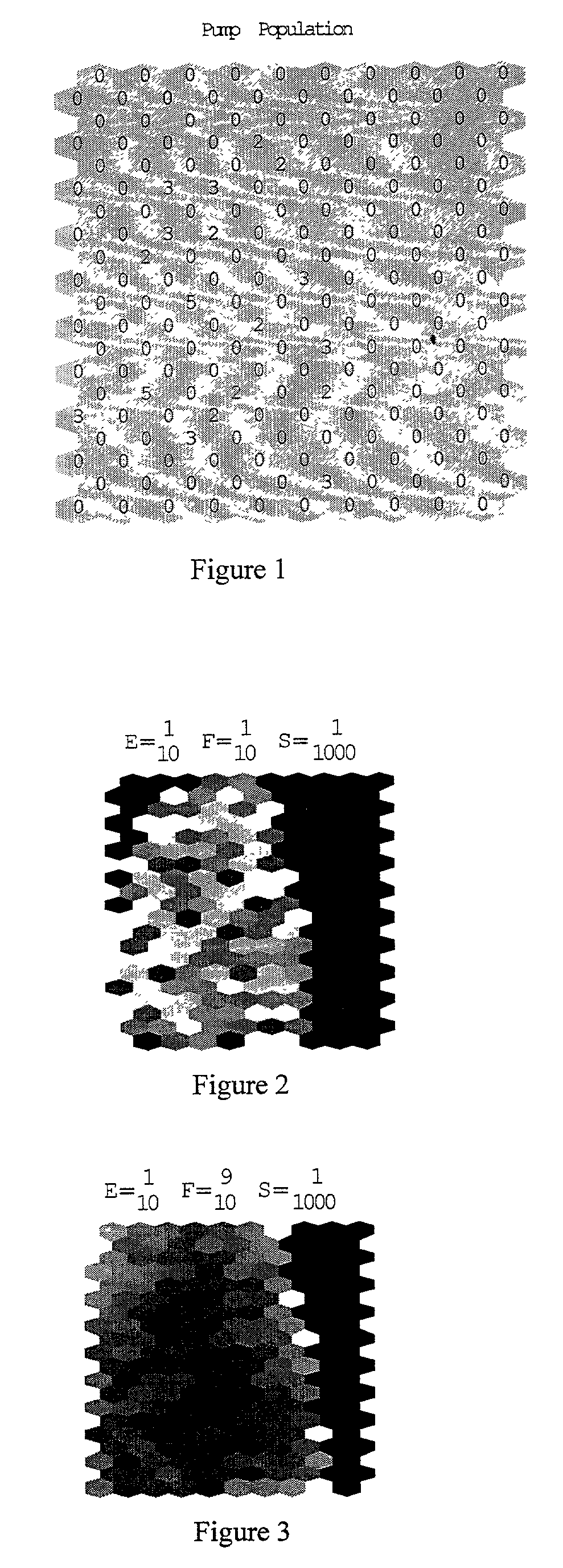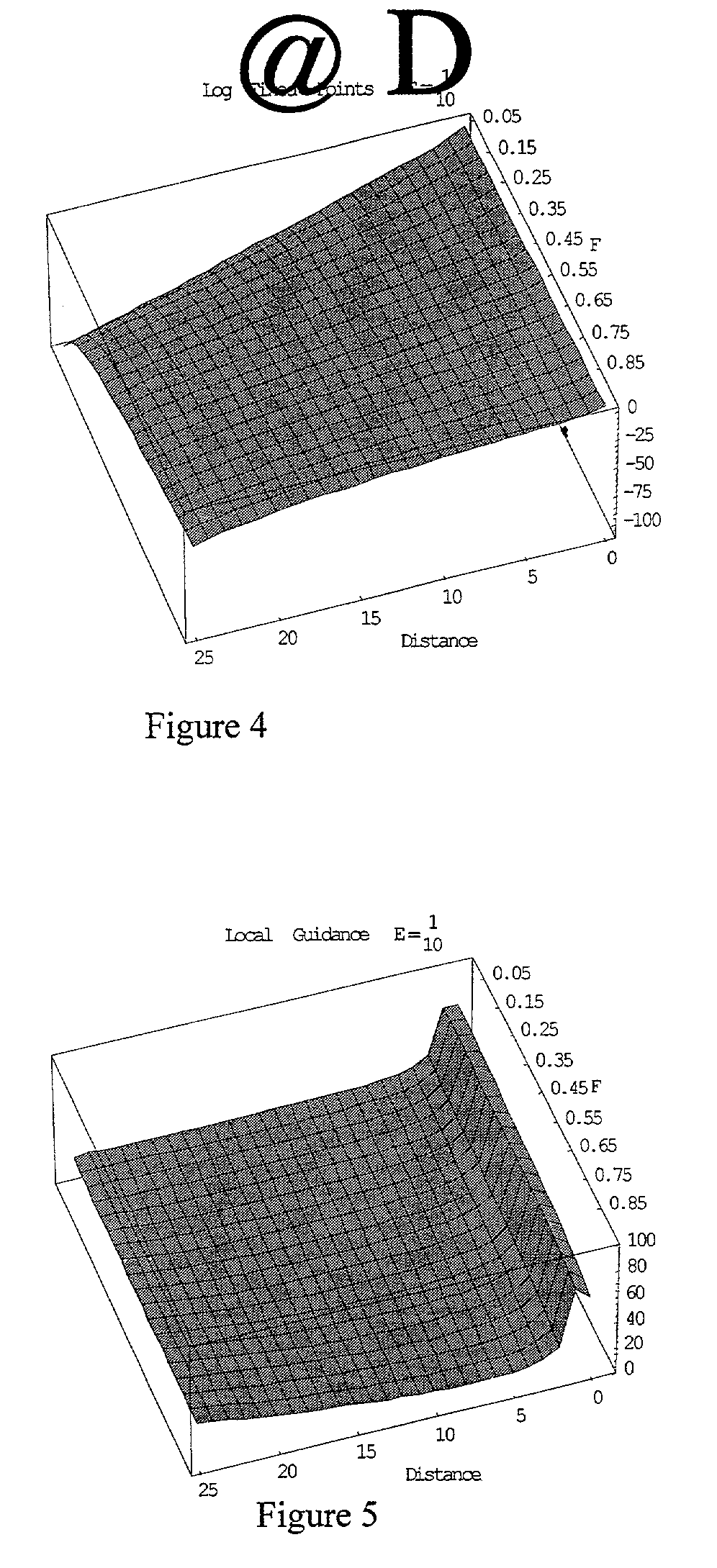Spatial coordination system
a technology of spatial coordination and coordination system, applied in the field of spatial coordination system, to achieve the effect of increasing the coverage of a spatial region
- Summary
- Abstract
- Description
- Claims
- Application Information
AI Technical Summary
Benefits of technology
Problems solved by technology
Method used
Image
Examples
Embodiment Construction
[0046]The present invention has utility as a communication system relating to the location of targets within a space using simple system components. Utility is found in solving complex coordination problems associated with tasking of air-combats to a population of air-defense or ground troop agents, traffic coordination, macro-economic modeling, sociological research, consumer behavior and manufacturing control, among others.
[0047]The pheromone infrastructure, detailed in S. Brueckner. Return from the Ant: Synthetic Ecosystems for Manufacturing Control. Dr.rer.nat. Thesis at Humboldt University Berlin, Department of Computer Science, 2000, enhances the execution infrastructure of the inventive software agents, providing the agents with an active environment where they may share information. The pheromone infrastructure introduces a spatial structure to the system in which the agents may deposit synthetic pheromones at discrete point locations (places) and perceive concentrations of ...
PUM
 Login to View More
Login to View More Abstract
Description
Claims
Application Information
 Login to View More
Login to View More - R&D
- Intellectual Property
- Life Sciences
- Materials
- Tech Scout
- Unparalleled Data Quality
- Higher Quality Content
- 60% Fewer Hallucinations
Browse by: Latest US Patents, China's latest patents, Technical Efficacy Thesaurus, Application Domain, Technology Topic, Popular Technical Reports.
© 2025 PatSnap. All rights reserved.Legal|Privacy policy|Modern Slavery Act Transparency Statement|Sitemap|About US| Contact US: help@patsnap.com



